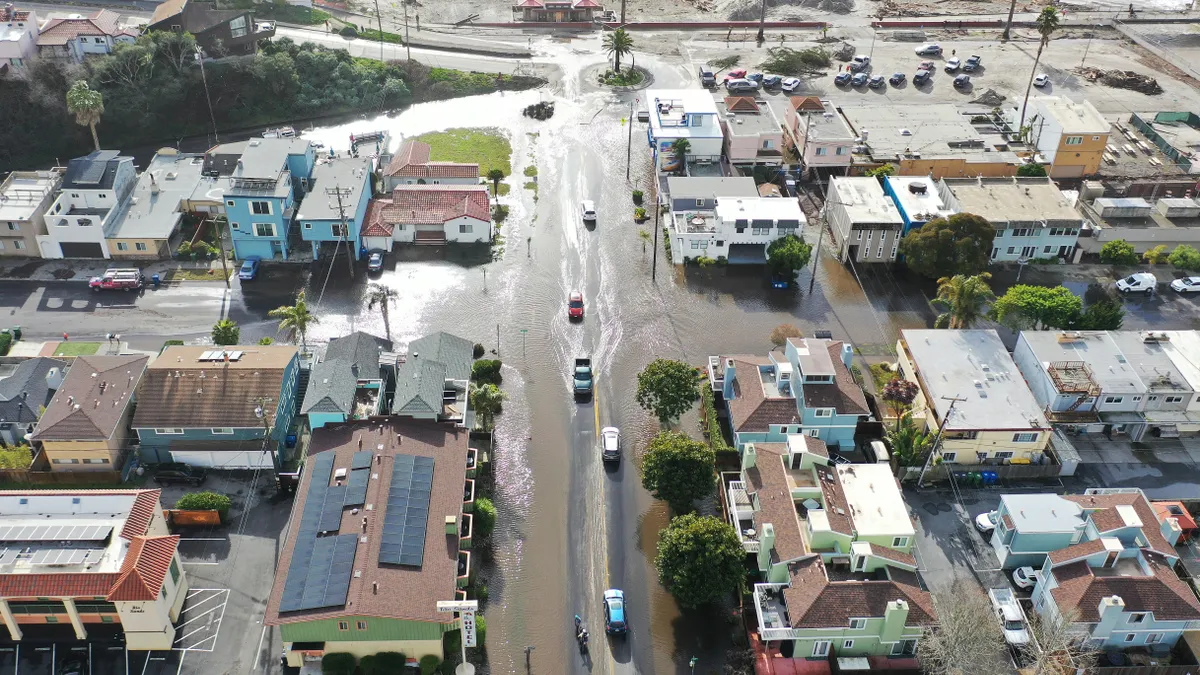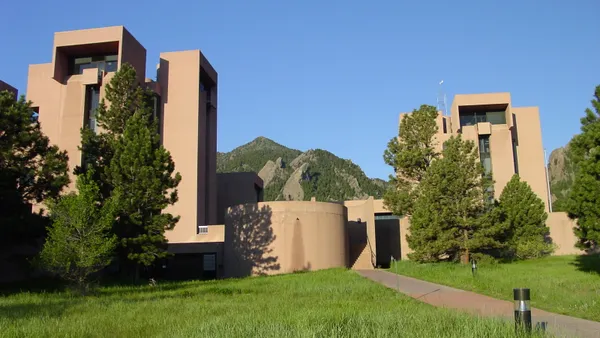Dive Brief:
- To help U.S. communities better plan for future climate change impacts, Argonne National Laboratory recently launched an updated version of its online Climate Risk and Resilience Portal, which was first launched in 2023.
- The new portal allows users to generate reports showing how climate hazards could impact vulnerable populations or infrastructure, such as retirement communities, hospitals and fire stations, said Tom Wall, director of Argonne’s Center for Climate Resilience and Decision Science, on a Feb. 1 webinar. The updates also make it easier for users to create climate hazard maps, charts and other visualizations.
- More new features are coming to the portal in the coming months, including information about inland flooding and coastal flooding from storm surge, higher-resolution local data, and tools that allow for more analysis within the portal. The portal currently covers the contiguous U.S. and Canada, and the Argonne team also plans on adding data for Puerto Rico and the Caribbean this year, Wall said.
Dive Insight:
Communities’ need for free, publicly available and actionable climate information inspired the development of the Climate Risk and Resilience Portal, also known as ClimRR, Wall said. According to ClimRR’s website, the data “provides the most sophisticated, free dynamically downscaled projections for the United States.” Dynamical downscaling is a method for obtaining higher-resolution, local climate change information from global models.
Argonne developed the portal, which uses one of the world's largest supercomputers, in collaboration with the Federal Emergency Management Agency, the Department of Energy’s Grid Deployment Office and AT&T, which uses the data to protect its infrastructure.
The portal is “geared towards community leaders, infrastructure managers, owners and operators, emergency managers and public officials to better understand future climate,” Wall said. The portal allows these decisionmakers to access peer-reviewed climate datasets to take a more data-driven approach to local analysis and planning, he added.
The portal allows users to simulate two potential future climate change scenarios for mid- and end-of-century: One known by scientists as RCP 8.5, in which humans continue to produce high levels of greenhouse gas emissions; and a lower-emissions, “stabilization” scenario known as RCP 4.5.
ClimRR’s website highlights potential use cases such as public health planning for extreme heat emergencies and examining projected wind speeds to determine future capacity for local wind energy infrastructure.
Argonne wants feedback from ClimRR users on the new features, said Carmella Burdi, senior GIS analyst in Argonne’s Decision and Infrastructure Sciences Division, on the recent webinar, which also served as a training on how to use the portal.
“We want this to be something that you can use to take action with, to do your planning with, to put together your presentations, your grants, whatever it is,” she said. “If it's not usable then we haven't done our job.” Users can provide feedback via email to [email protected].












